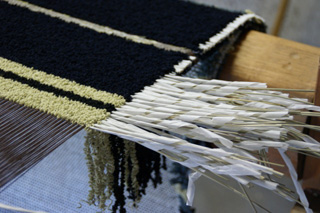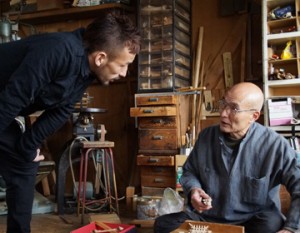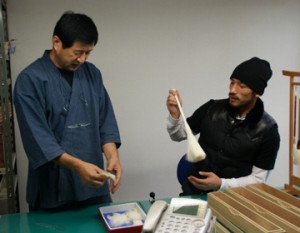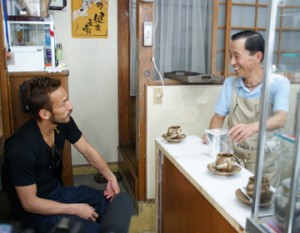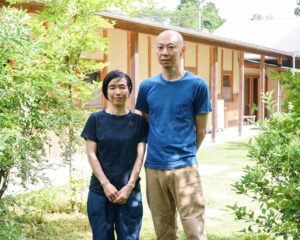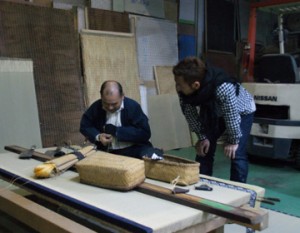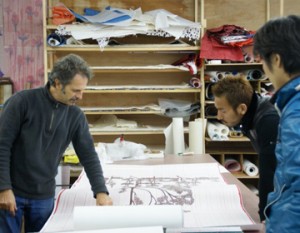Woven fabric that blends in with life
Kurashiki city is a beautiful city with rows of willow trees along the river, and streets lined with white plaster wall mansions. It is a picturesque city which carries the atmosphere of Edo to the present day. There is a hidden treasure which blends in well with these beautiful streets. It is the “Kurashiki Dantsu”.
”Dantsu” is a hand woven mat. Mats are generally made from wool and silk, but ”igusa”, ”washi” and cotton are used for Kurashiki Dantsu. These materials are less likely to retain moisture and create dust, making them suitable for use in Japanese homes.
They are sturdy enough to be used for more than 20 years, and the modern striped patterns are impressive.
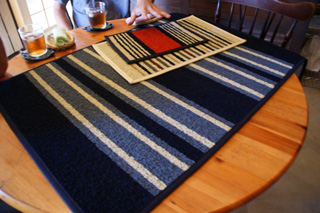
Changing over time
Kurashiki Dantsu was crated by the authority of folk craft Sori Yanagi. However, it is not very widely known. This is because production stopped in 1986. ”Igusa” cultivation was popular in Kurashiki City and its surrounding area. From the Late 19th century to early 20th century, ”Hanagoza” was produced for export.
But by the late 1920’s, the industry faced a slump due to mass production of inferior products and tariff barriers. Thus, inventor Kanichiro Yabuki who was involved in the production of Hanagoza designed “Kimpaori”, a new type of rug that had more affinity with the tastes of foreigners, and was more compatible with the mixed Japanese and Western style homes common in Japan. Kimpaori caught Sori Yanagi’s attention. After numerous adjustments such as adding stripes to formerly plain Dantsu, “Kurashiki Dantsu” was completed.
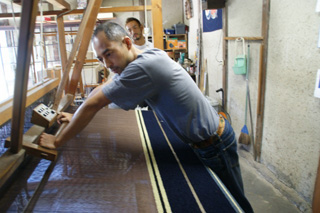
Preserving what is good
Kurashiki Dantsu became popular as a local ”kogei” of Kurashiki, but by the 1970’s it faced hardship again due to both increase in the price of material and the aging of craftsmen. The difficulties could not be overcome, and production of Kurashiki Dantsu came to an end in 1986.
However, Yuichi Takiyama revived Kurashiki Dantsu by starting production in 1992. He is the only manufacturer and operates as a private business.
“With many traditional ”kogei” on the decline, we should preserve what is good and pass it on to the next generation. That is the way culture should be. I believe Kurashiki Dantsu is an example.” His determination must be what brought Kurashiki Dantsu back to life.
